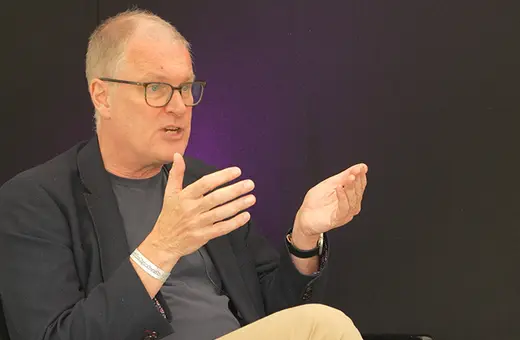Innovation is the hottest word in business and an ideology that reaches ever further into our lives. Not only does innovation-hype fail to deliver, but our obsession with the new distracts us from the work that matters most. Andrew L. Russell calls out the delusion and outlines how we can escape innovation’s path of destruction.
An old air conditioner, poorly installed and maintained, threw out sparks on a warm night in early September 2018. The damage from the fire that ensued would not have been so devastating if the building had a sprinkler system, or fire doors, or fire hoses. But the building had not received its full annual maintenance budget since 2014 and had even closed temporarily in 2015 when it could not afford to pay its cleaning and security staff—people we would today refer to as “essential workers.”
The building that burned was Brazil’s National Museum, located in a modest section of Rio de Janeiro. The National Museum was home to treasures of human civilization, including the oldest human remains found in the Americas, the first recordings of indigenous music, pre-Columbian artwork and textiles, a world-famous collection of crickets and grasshoppers, and a scientific library of nearly 500,000 books, documents, and papers. When the fire engulfed it, on that terrible night in 2018, scientists around the world joined Brazilians in expressions of shock and sadness at the loss of Latin America’s largest collection of natural history and anthropological artifacts.
The devastation could have been prevented by appropriate staffing, equipment, and maintenance—very basic elements of any modern building, especially those with valuable possessions. As far back as 2004, inspectors had warned about the hazards of exposed wires, peeling wall material, and other dangers that routine maintenance should have addressed. Paradoxically, the national government of Brazil, the patron of the National Museum, had both the funds and ambition to be perceived as modern. After all, this is the country that inscribes “ordem e progresso” ("order and progress") on its national flag, and had recently made major investments into infrastructure and construction in the more affluent and camera-friendly neighborhoods of Rio. The world witnessed the glimmering new venues Brazil built as host of the 2014 FIFA World Cup and the 2016 Summer Olympics.
To complement these monuments to Brazilian sport, Brazil’s cultural institutions likewise received significant investment in the preceding decade, including a $2 billion overhaul of Rio de Janeiro’s port district in advance of the 2016 Olympics. The centerpiece of the district is the Museum of Tomorrow, a stunning, futuristic building that opened in 2015 and challenged visitors to think about human history and the future of our planet. While the museum’s message and sparkling design dazzled visitors, critics worried that the attention and resources devoted to the Museum of Tomorrow ignored and compounded problems of Brazils’ past and present. Not only did the Museum of Tomorrow ignore the troubled history of slave trading at its site in Rio's port, it also diverted funds away from Brazil’s existing museums, which were sorely in need of maintenance and upkeep.





















Join the conversation